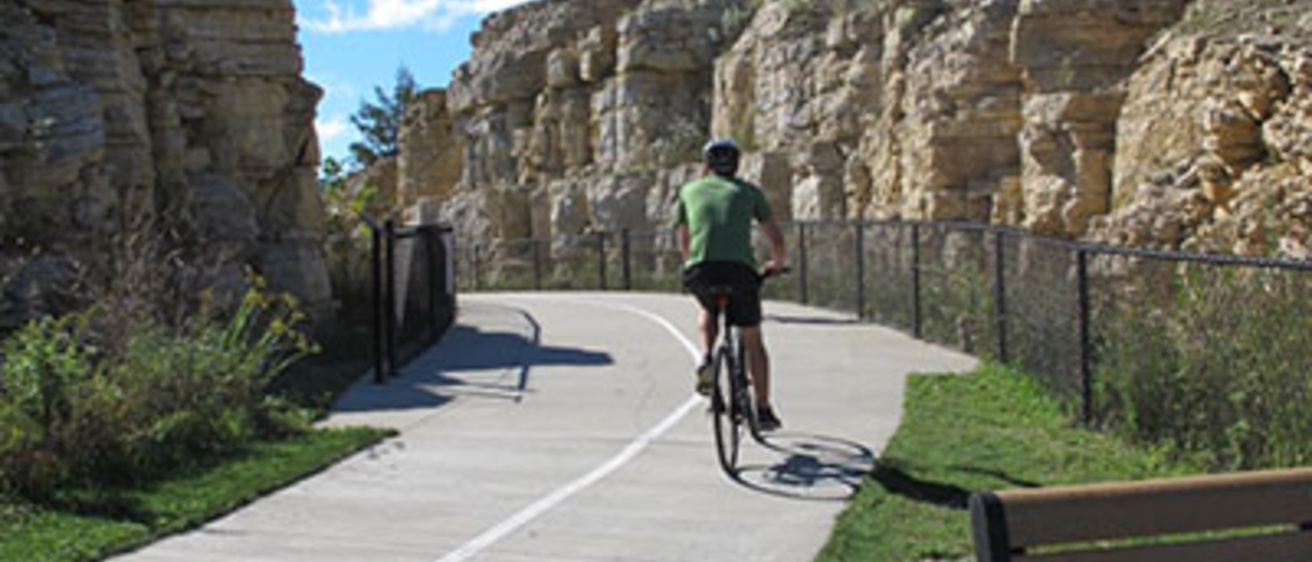In the heart of the Midwestern United States is the Driftless Area, a region of unique terrain that escaped glaciation. This pre-historical event has provided us with the towering bluffs, drastic elevation changes and scenic views that characterize Northeast Iowa. Winneshiek County in particular, is known for its natural beauty. Outdoor enthusiasts frequent the area for various reasons, including exploration of recreational trails. Development of a high-quality trail system requires a cohesive effort from a range of stakeholders. In Winneshiek County, this effort is spearheaded by the Winneshiek County Conservation Board (WCCB) and The Upper Explorerland Regional Planning Commission (UERPC). Through the Iowa Initiative for Sustainable Communities (IISC), these partners reached out to a group of graduate students in the School of Urban and Regional Planning (URP) for trail planning assistance.
The group was tasked with developing a method for quantifying the economic impact of individual trails throughout the region. With an economic impact assessment (EIA) toolkit in hand, the WCCB and UERPC are confident that they can make a stronger case than ever before for trail development. The goal is to demonstrate that the value of trails is tangible and measurable.
During the Fall 2015 semester, group members John Bruce, Ryan Dusil, Grant Shirts, and Matthew Van Hoeck created and implemented a trail user survey on The Trout Run Trail in Decorah to estimate user spending. This data served as the basis for a trial run of the EIA toolkit. The results of the pilot yielded an estimated impact of between $1.6 million and $2.4 million in annual output. The 19% margin of error reaffirms the importance of thorough data collection moving forward. With the recently completed Prairie Farmer Recreation Trail and Dry Run Trail in the works, the county is anxious to put these methods to use.
At a meeting in late January, UERPC members expressed that trail prioritization often boils down to community readiness. Historically, communities that can exhibit the support and capacity to carry out a project are the ones that receive preference. This approach can and has created large gaps in the regional trail network. That is where the URP graduate students come in. They will spend the remainder of the semester formulating a trail development strategy to score potential projects based on various criteria. This will help the region rally around projects that accurately reflect stakeholder values. The criteria will include variables such as population reach, access to local destinations, geographical barriers, and economic impact potential. Similar to the EIA toolkit, this methodology is meant to live on as long as there are trails to be planned.
At its core, this project is about helping communities sustain their planning efforts even when planning capacity is limited. The students have high hopes that their work will help small communities “punch above their weight class” in the ever intensifying competition for funding.
